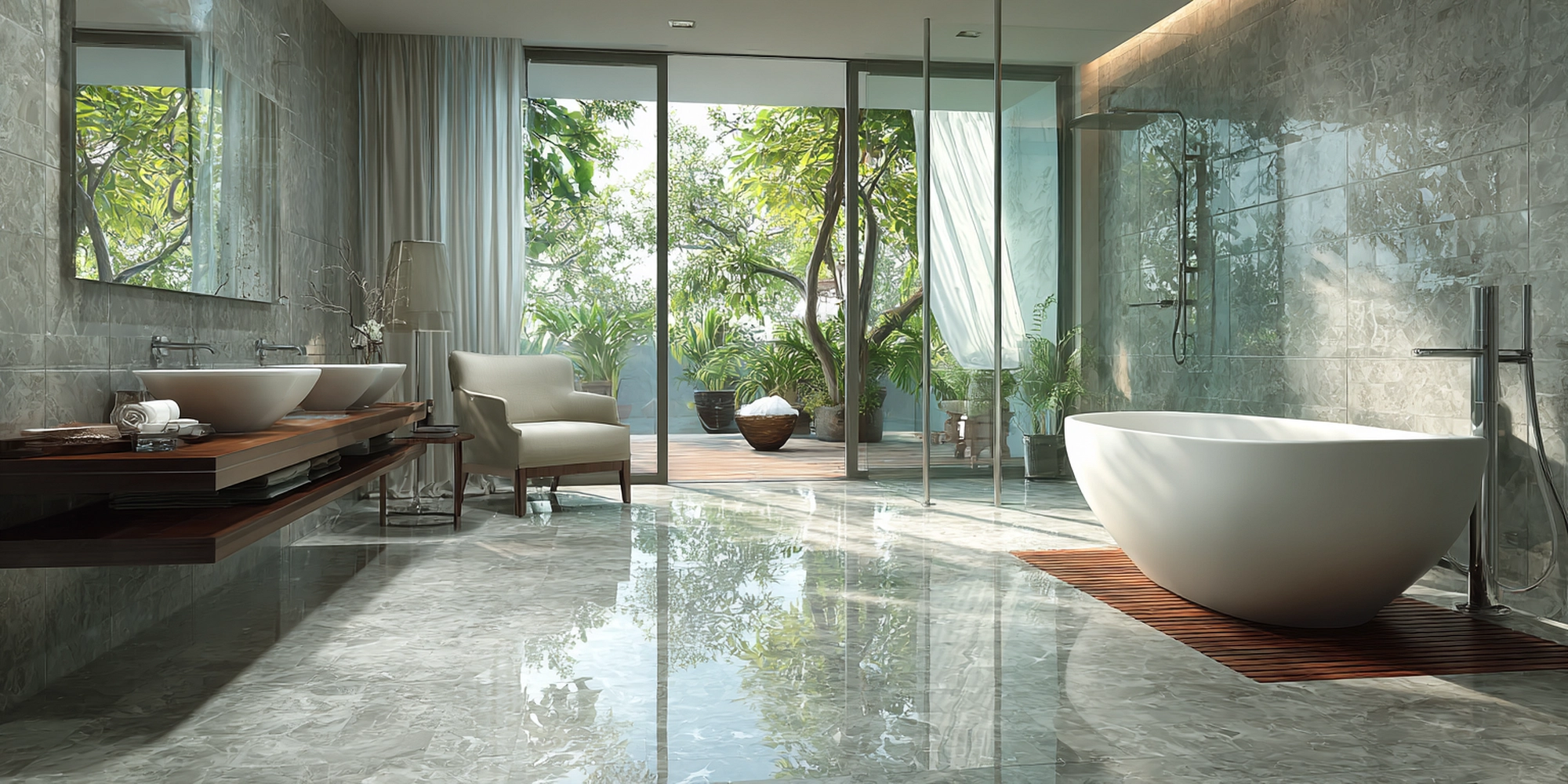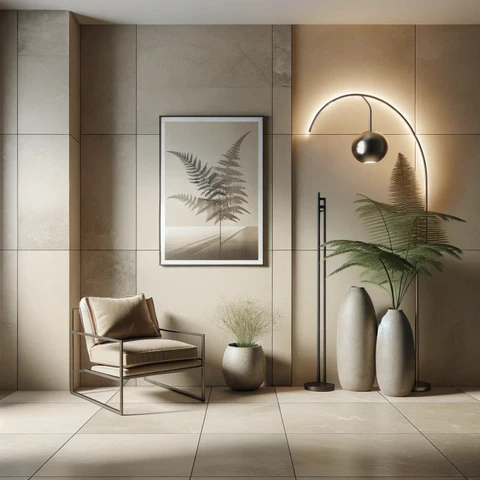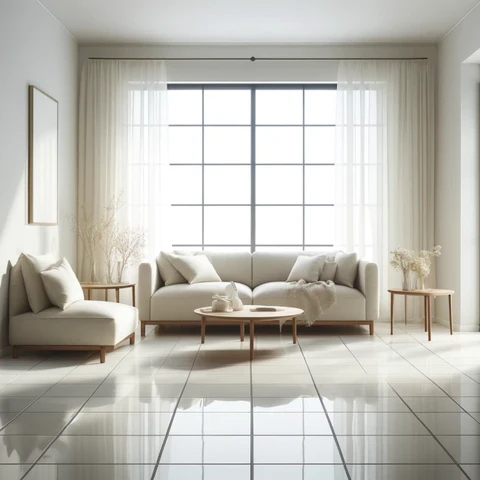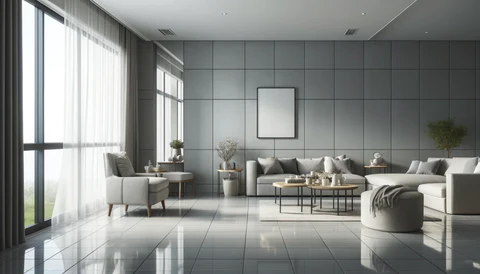
Real help. Real fast.
Call or text (650) 215-6464
Most replies within minutes · Mon–Fri 8–5 PT
Or [email protected] 24/7

Call or text (650) 215-6464
Most replies within minutes · Mon–Fri 8–5 PT
Or [email protected] 24/7


Summary: Porcelain tiles have been a popular choice in the home decor space in recent years, thanks to their durability, versatility, and aesthetic appeal. These tiles are made from dense, fine-grained clay fired at high temperatures, resulting in a strong, non-porous material that is resistant to water, stains, and wear.
With a wide range of types available, porcelain tiles offer endless design possibilities for residential and commercial spaces.
Let’s dig into the types of porcelain tiles – characteristics, applications, pros, and cons, to help you make an informed decision.
About the Author: Elchin, co-founder of Solidshape, brings over 20 years of design experience. He’s consulted on hundreds of projects—from malls to luxury homes—and is known for helping clients make smart, stylish tile choices.
Matte and unglazed porcelain tiles feature a non-reflective, natural-looking finish that adds a subtle, understated elegance to any space. The absence of a glossy surface creates a more rustic, earthy appearance, making these tiles a popular choice for those seeking a minimalist or industrial aesthetic.

Glazed porcelain tiles are coated with a liquid glass layer fired onto the surface creating a smooth, glossy finish. This process allows for a wide range of colors, patterns, and designs. So, if you wish to add a touch of personality and style to your space, this is the right choice.

From solid colors to intricate patterns that mimic the look of natural stone or wood, there are umpteen design opportunities. The non-porous surface prevents liquids and stains from penetrating the tile, making them a practical choice for areas prone to spills and splashes, such as kitchens and bathrooms.
Full-body porcelain tiles, also known as through-body porcelain tiles, are made from a single layer of colored clay that extends throughout the entire thickness of the tile. This means that the color and pattern remain consistent from the surface to the core, making chips and scratches less noticeable.

These tiles are known for their exceptional durability and longevity, making them an ideal choice for high-traffic commercial settings such as airports, shopping malls, and office buildings.
| Types of Porcelain Tile | Pros | Cons |
| Matte & Unglazed Porcelain Tiles | Safer in bathrooms and kitchens for its slip-resistant property | Limited color and design options as compared to other types |
| Glazed Porcelain Tiles | Wide range of colors & patterns | Chips and scratches become more visible on the glazed surface |
| Full-body Porcelain Tiles | Seamless installation and easy replacement of damaged tiles | Might be more expensive than other types |
| Polished Porcelain Tiles | Easy to clean and maintain | Not suitable for wet areas without anti-slip treatments |
| Double-Charged Porcelain Tiles | Suitable for high-traffic areas and commercial settings | Limited design options compared to the printed alternatives |
| Printed Porcelain Tiles | More durable because of the clear glaze coating | Printed surface wears away over time in high-traffic areas |
| Textured Porcelain Tiles | Suitable for both indoor and outdoor applications | Difficult to clean than the smooth alternatives |
As the name suggests, polished porcelain tiles also feature a glossy, reflective surface, offering luxury and sophistication to any space. The polishing process involves grinding down the surface of the tile to create a smooth, mirror-like finish that reflects light and enhances the color and pattern of the tile.

These tiles are often used in formal living areas, dining rooms, and upscale commercial settings such as hotels and restaurants to create a sense of elegance and refinement.
Browse the extensive collection of Solidshape’s polished porcelain tiles to create spacious spaces in your home. Explore our options.
Double-charged porcelain tiles are created using a unique manufacturing process that involves applying a second layer of color and pattern to the surface of the tile before firing. This additional layer adds depth, dimension, and durability to the tile, creating a more realistic and visually appealing look.

Homeowners use these tiles to mimic the appearance of natural stone, such as marble or granite, without the maintenance and cost associated with these materials.
Printed porcelain tiles are manufactured using advanced digital printing technology. This allows for a vast range of colors, patterns, and designs to be applied directly to the tile surface.

The process enables manufacturers to create highly detailed, realistic images that can replicate the look of natural materials such as wood, stone, or even fabric.
With these tiles, you will have extensive design possibilities to create a unique, personalized look in your home or business.
Textured porcelain tiles replicate the look and feel of natural stone with a three-dimensional surface that adds tactile interest to a space. These tiles often feature a range of textures, from the rough, cleft-like surface of slate to the smooth, undulating ripples of sandstone.

It is an ideal choice for those who want to add a natural, organic feel to their space without the maintenance and cost associated with real stone.
Porcelain tiles offer a range of benefits that make them an excellent choice for enhancing the durability and style of your home decor. Some of the key advantages include:
Porcelain tiles are highly resistant to wear, scratches, and chips, making them a long-lasting choice for high-traffic areas.
The non-porous nature of porcelain tiles makes them resistant to water and moisture, ideal for bathrooms, kitchens, and outdoor spaces.
Porcelain tiles are resistant to stains and easy to clean, making them a practical choice for areas prone to spills and messes.
With a wide range of colors, patterns, and textures available, porcelain tiles can be used to create a variety of looks, from classic and traditional to modern and trendy.
Porcelain tiles require minimal upkeep, making them convenient for busy households and commercial settings.
Solidshape’s collection of porcelain tiles boasts all the benefits and brings the desired look to your interiors.
While porcelain tiles are known for their durability and low maintenance requirements, proper care is still essential to preserve their beauty and longevity.
Here are some tips for maintaining the different types of porcelain tiles:
Whether you’re renovating your home or planning a new build, incorporating porcelain tiles into your design can help create a space that is both beautiful and built to last.
Find the perfect porcelain tiles for your next project at Solidshape. Our extensive collection features various colors, patterns, and textures to suit any style and budget.
From classic glazed tiles to innovative printed and textured options, we have the expertise and selection to help you create a space that is both beautiful and built to last.
Porcelain tiles are typically classified into three grades based on their quality and durability:
When choosing porcelain tiles, consider the intended use and traffic level of the space to select the appropriate grade.
The main difference between porcelain tile and full-body porcelain tile lies in the composition and color consistency of the tile. Regular porcelain tiles are made from a layer of clay with a glazed surface, meaning the color and pattern are only on the surface of the tile.
Full-body porcelain tiles, on the other hand, are made from a single layer of colored clay that extends throughout the entire thickness of the tile, ensuring color and pattern consistency from surface to core.
Both porcelain and ceramic tiles have their advantages, and the choice ultimately depends on the specific needs and requirements of your project.
Here are some factors to consider:
Consider your specific needs, budget, and design preferences when deciding between porcelain and ceramic tiles.